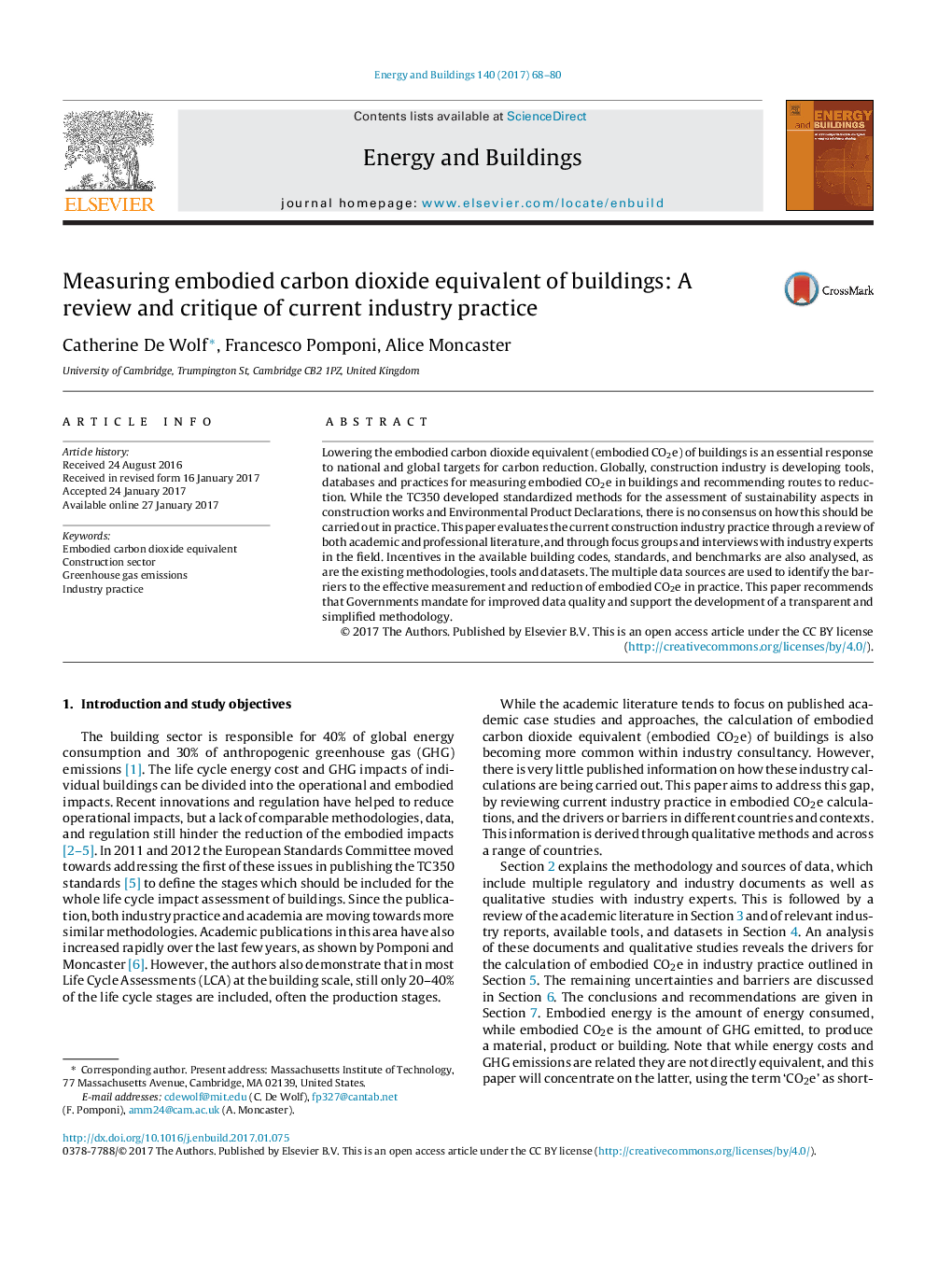| کد مقاله | کد نشریه | سال انتشار | مقاله انگلیسی | نسخه تمام متن |
|---|---|---|---|---|
| 4919257 | 1428950 | 2017 | 13 صفحه PDF | دانلود رایگان |
- Review of current industry practice in calculating the embodied carbon in buildings.
- Embodied carbon and energy results available in academic literature: big variability (5-25Â GJ/m2 and 200-1700Â kgCO2e/m2).
- Documentary analysis: various methods, boundaries, regions apply to the available reports, tools and databases.
- Drivers and enablers such as ISO, Benchmarks, Incentives, Rating Schemes are discussed, as well as barriers and omissions.
- Variability due to assumptions and scope definition differences, lack of reliable benchmarks, though several national databases for EPDs of materials exist.
Lowering the embodied carbon dioxide equivalent (embodied CO2e) of buildings is an essential response to national and global targets for carbon reduction. Globally, construction industry is developing tools, databases and practices for measuring embodied CO2e in buildings and recommending routes to reduction. While the TC350 developed standardized methods for the assessment of sustainability aspects in construction works and Environmental Product Declarations, there is no consensus on how this should be carried out in practice. This paper evaluates the current construction industry practice through a review of both academic and professional literature, and through focus groups and interviews with industry experts in the field. Incentives in the available building codes, standards, and benchmarks are also analysed, as are the existing methodologies, tools and datasets. The multiple data sources are used to identify the barriers to the effective measurement and reduction of embodied CO2e in practice. This paper recommends that Governments mandate for improved data quality and support the development of a transparent and simplified methodology.
Journal: Energy and Buildings - Volume 140, 1 April 2017, Pages 68-80
